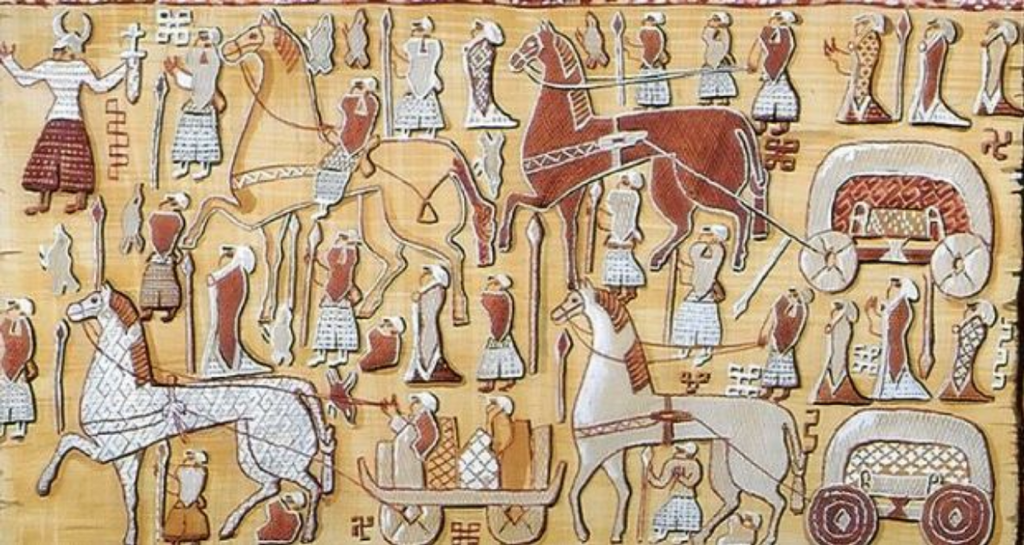The Horned Helmet Did Appear In Viking Artifact
As complicated as Loki the Trickster, horned helmets of the Vikings aroused many questions and mysteries around them. We are right to claim that the Viking warriors didn't wear the horned helmets. We are not wrong to claim that the Vikings wore horned helmets in their culture. It's confusing to a certain extent. However, the textile found in the Viking Oseberg ship showed that the Vikings used the horned helmet in some formal occasions.
Horned Helmets Were Not Historical
Indeed, horned helmets were believed to be the modern work of Richard Wagner’s opera ”The Ring of Nibelung" 1876. Historians agreed that the Vikings didn't wear horned helmets to join their battles.

Viking horned helmet is the modern fabrication?
In fact, the Viking helmets were much like a simple bowl sometimes with the nose shield. (See more: Did the Vikings wear horned helmet)
The Oseberg Ship Burial Site Excavation
In 1904, a farmer in Vestfold, Southeast Norway unearthed remnants of a Viking ship. In 1905, the excavation was complete with many exciting findings. Two skeletons were found inside the ship with many precious artefacts.
There were theories upon the social positions of the two women. Many claimed they were the noble people while other believed the one woman was the mistress while the younger was her slave.
-
See more: Odin Figurine With Horns
Not only was the ship decorated with the beautiful pattern which we call the Oseberg style nowadays but there were many valuable things inside. For example, there were four animal head woodworks which required effort and time to make. There was a cart with silver layers inside. The grave also contained priceless textiles of the Viking age and textile tools as well.
Of all, there was a piece of textile that gained much popularity for the decorations on it. It was the Oseberg Tapestry with exotic silk from Central Asia.
The Oseberg Tapestry
The Oseberg Tapestry consists of two parts: the left and the right. The left part seems to show a religious ceremony with a leader and people following with wagons and horse.
In the left part of the tapestry, we can see the wagons with two people. It was believed that they were the women who were buried inside the Oseberg ship. The leader of the ceremony was the one in the top left of the tapestry.

Left and Right Parts of Oseberg Tapestry
This figure wore a horned helmet and was obviously bigger than other people in the depiction. His hand held a sword in the upside down position which presented his wealth and high social rank. Because in the Viking age, only the people of wealth could possess a sword. To conclude, the man with the horned helmet was both the leader of the ceremony and the one with high power in the Viking community.
There were many ways to interpret the right part of the Oseberg Tapestry. But it was generally accepted that the people and horses were parts of the ceremonies while the house in the left might be the Viking temple.
It's still confusing afterall
Finally, there was no clear explanation on the horned helmet in the Oseberg Tapestry. The Viking horned helmets didn't appear in the battles because they were too impractical. But no one could deny the fact that the horned helmet appeared in the Viking artifact Oseberg Tapestry.
Maybe it's true that the Tapestry was trying to depict a formal ritual and the leader of the ritual must wear the horned helmets. But all we can do is to look for the future research. Hopefully, it will give us the answer that can explain the Oseberg Tapestry and the origin of the two women inside the burial as well.




